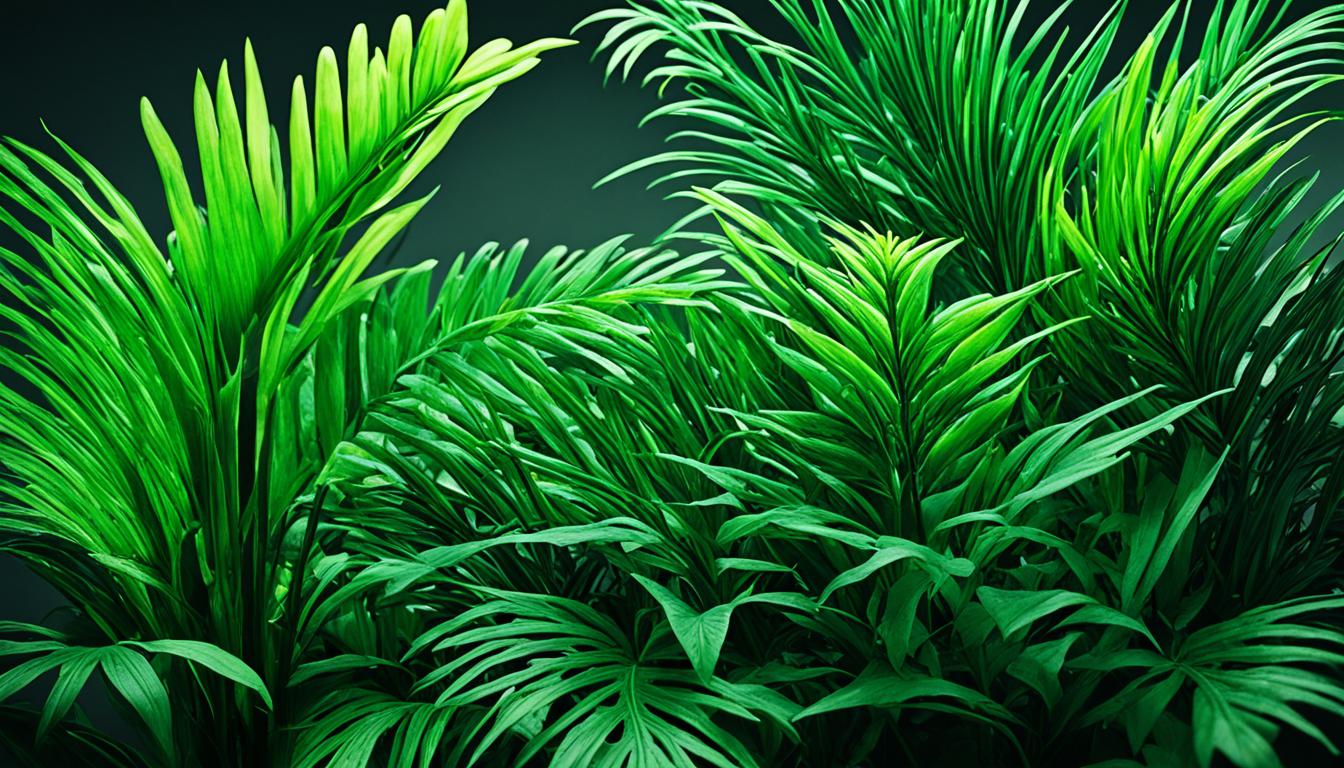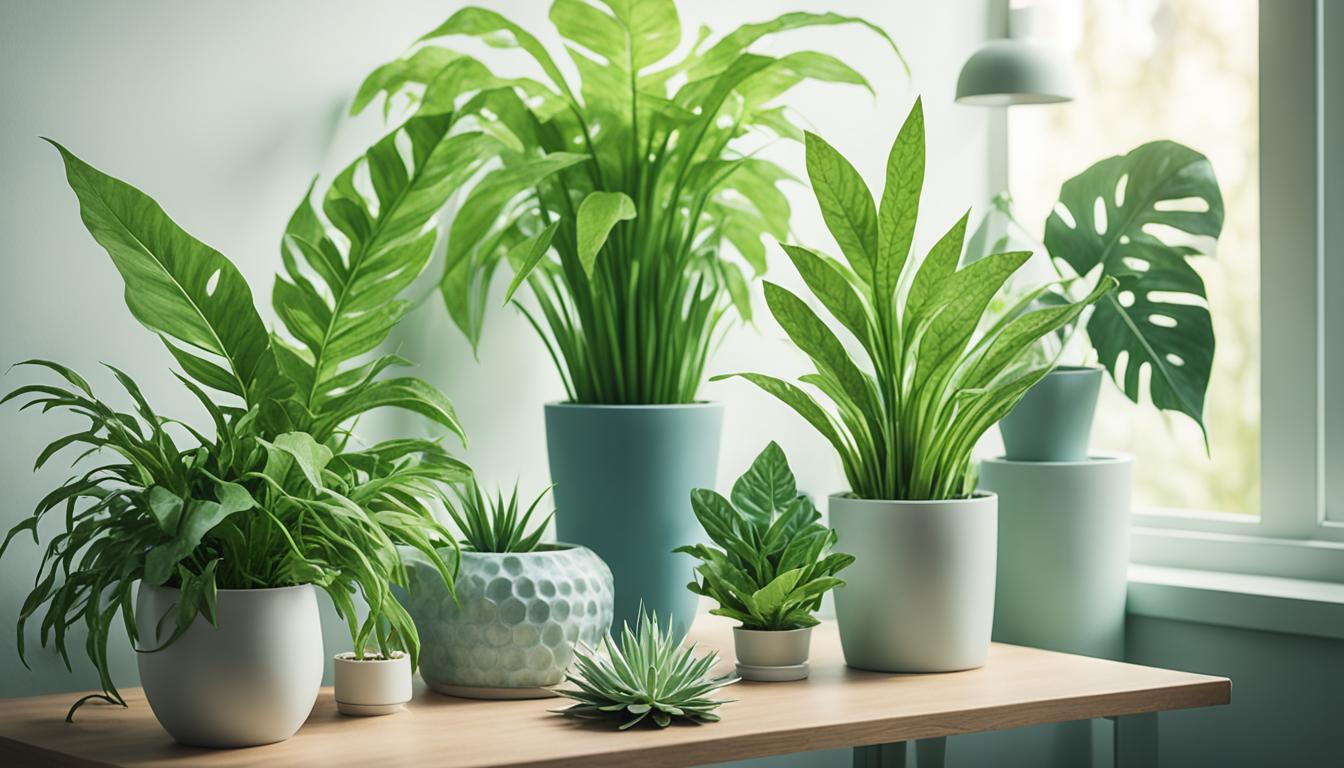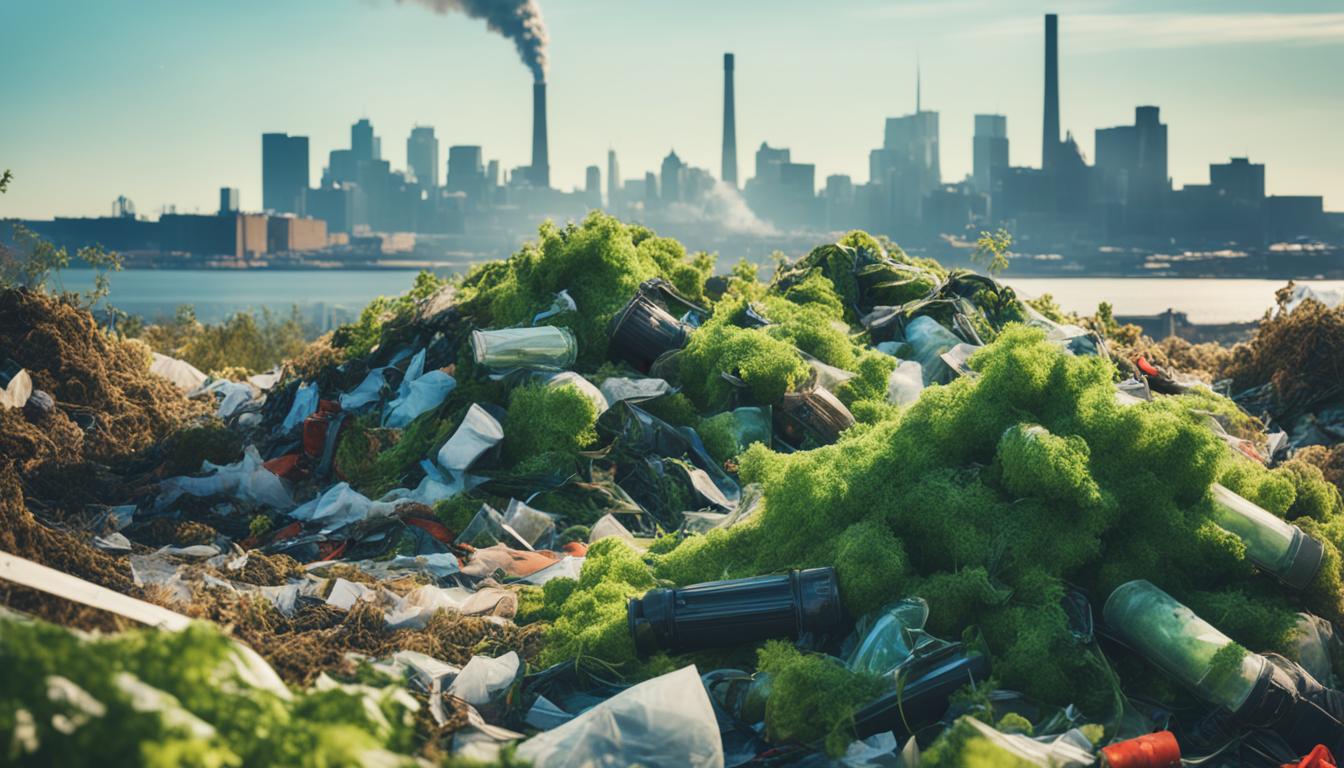🤍 Unmatched Quality, Authentic Craftsmanship
🤍 Unmatched Quality, Authentic Craftsmanship
🤍 Unmatched Quality, Authentic Craftsmanship
Hello there! Welcome to our guide on what is the problem with fake plants.
While faux plants may seem like a convenient and low-maintenance choice for home decor, there are several downsides that are worth considering.
In this article, we will delve into the environmental factors and fake plants health concerns, shedding light on why they may not be the ideal option for your space.
Fake plants, also known as faux plants or artificial plants, have gained popularity in the realm of home decor.
They are designed to mimic the appearance of real plants and are often used to add a touch of greenery and aesthetic charm to indoor spaces.
However, beneath their surface appeal, there are hidden issues that deserve our attention.
From an environmental perspective, the production and disposal of fake plants have significant implications.
The materials used, such as plastic and PVC, are derived from non-renewable resources and contribute to waste generation.
Additionally, the synthetic materials in fake plants can release harmful chemicals into the air, posing health risks to humans and pets.
By understanding the problems with fake plants, we can make more informed decisions about our home decor choices.
Let's dive deeper into the downsides of faux plants and explore why embracing real plants could be a smarter and more sustainable option.

Fake plants, also known as faux plants or artificial plants, have become a popular choice for home decor.
They offer the convenience of low maintenance and can add a touch of greenery to indoor spaces.
However, the use of fake plants raises important questions and concerns regarding their impact on the environment and human health.
When it comes to understanding fake plants, it's essential to recognize that these plants are meticulously manufactured to mimic the appearance of real plants.
They are designed to be visually appealing and often indistinguishable from their natural counterparts.
But despite their aesthetic appeal, the use of faux plants presents a dilemma in the world of home decor.
As we explore the dilemmas surrounding fake plants, we must consider the environmental consequences of their production and disposal.
Additionally, we need to address the potential health risks associated with the synthetic materials used in their construction.
Fake plants have become a common sight in homes, offices, and other interior spaces.
They offer an easy way to incorporate greenery into decor without the need for watering or sunlight.
However, the allure of fake plants can obscure the underlying challenges they pose.
In the next sections, we will closely examine the problem with fake plants, delving into their environmental impact and the health concerns they raise.
Understanding these dilemmas will provide you with valuable insights to make informed decisions about your home decor choices.
When it comes to fake plants, there are two primary concerns: the environmental cost of faux flora and the health concerns linked to synthetic plant materials.
Let's take a closer look at each of these issues.
The production and disposal of fake plants have significant environmental implications.
The manufacturing process often involves the use of non-renewable resources and consumes a considerable amount of energy.
Additionally, the materials used, such as plastic and PVC, are not biodegradable and can contribute to waste generation.
This raises questions about the sustainability of fake plants and their impact on our planet.

Synthetic materials commonly used in fake plants, such as plastic and PVC, can pose health risks.
These materials may release harmful chemicals into the air, which can be inhaled by humans and pets.
Long-term exposure to these chemicals can potentially lead to respiratory issues and other health complications.
It's important to consider the potential health hazards associated with fake plants when deciding on your home decor options.
To truly understand the drawbacks of fake plants, let's compare them to their real counterparts.
In this section, we will explore the aesthetic and wellness impacts of both artificial and real plants.
By understanding the advantages of real plants, you can gain a greater appreciation for their ability to create a visually appealing and healthy environment.
When it comes to aesthetics, there's no denying that real plants have a unique charm and beauty that artificial plants struggle to replicate.
Real plants bring a sense of life and vibrancy to any space, with their intricate textures, natural colors, and the way they gracefully interact with light and air.
These visual elements can truly elevate the overall aesthetic of a room, creating a more authentic and inviting atmosphere.
In addition to their aesthetic impact, real plants also offer a range of wellness benefits.
They have the incredible ability to purify the air by absorbing harmful pollutants and releasing oxygen, improving indoor air quality and creating a healthier living environment.
Research has also shown that being surrounded by real plants can reduce stress, improve mood, and enhance overall well-being.
On the other hand, artificial plants may initially provide a similar visual appeal, but they lack the genuine beauty and natural energy that real plants possess.
While they require minimal maintenance, they cannot offer the same level of freshness and vitality that real plants bring to a space.
Additionally, artificial plants do not provide the same air-purifying benefits or wellness advantages as their living counterparts, which makes them a less preferable choice for those seeking to create a truly harmonious and healthy home.
By considering the aesthetic and wellness impacts of artificial and real plants, you can make a more informed decision when it comes to your home decor choices.
Embracing the advantages of real plants not only adds beauty and freshness to your space, but also contributes to your overall well-being.
While fake plants may provide immediate visual appeal, they lack the many benefits that real plants offer.
Real plants not only enhance the aesthetic of a space but also contribute to the overall well-being of your environment.
Let's explore faux plants disadvantages and the potential negative energy that can arise from non-living decor.
Real plants offer a range of benefits that cannot be replicated by faux plants.
They release oxygen, improve air quality, and help maintain proper humidity levels in your space.
Additionally, real plants can contribute to creating a calming and relaxing atmosphere, promoting mental well-being and reducing stress.
On the other hand, faux plants do not provide these benefits.
They do not oxygenate the air or have the ability to purify it.
Without the natural properties of real plants, faux plants fall short in improving the ambiance and health of your indoor environment.
From a Feng Shui perspective, the presence of non-living decor, including faux plants, can disrupt the flow of positive energy in a space.
In Feng Shui philosophy, living plants are believed to bring vibrant energy, symbolizing growth, vitality, and abundance.
Non-living decor, such as faux plants, lacks the life force and connection to nature that real plants embody.
The negative energy associated with non-living decor can impact the overall energy balance in a room, potentially affecting the well-being and harmony of the occupants.
To create a positive and harmonious space, it is advisable to opt for real plants that bring life and vitality to your environment.

| Disadvantages of Faux Plants | Lack of Benefits | Negative Energy | Non-Living Decor |
|---|---|---|---|
| Faux plants do not offer the same benefits as real plants, such as improved air quality and mental well-being. | Real plants release oxygen, improve air quality, and contribute to a relaxing atmosphere. | Faux plants lack the vibrant energy and life force that real plants bring to a space. | Non-living decor disrupts the flow of positive energy and may impact the overall energy balance in a room. |
There has been ongoing debate surrounding the potential harm caused by fake plants.
In this section, we will delve into the facts and uncover the truth regarding the impact of fake plants on both the environment and human health.
By examining scientific research and expert opinions, we aim to provide a deeper understanding of the fake plants' harmful effects.
It is crucial to approach this topic with an open mind and consider the various perspectives.
Some believe that fake plants pose significant risks, while others argue that the harm is negligible.
By exploring the available information, we can gain valuable insights and make more informed decisions about incorporating fake plants into our living spaces.
Fake plants may seem like a harmless decorative option, but their environmental impact goes far beyond their aesthetic appeal.
Understanding the lifecycle of synthetic plants and the disposal problems they present is crucial in making sustainable choices for our home decor.
The production of fake plants involves the use of non-renewable resources and energy consumption.
Synthetic materials, such as plastic and PVC, are commonly used to create the plant replicas.
These materials contribute to carbon emissions during the manufacturing process.
Furthermore, the lifecycle of synthetic plants includes transportation and distribution, further increasing their carbon footprint.
This process involves additional energy consumption and emissions, adding to the overall environmental impact of fake plants.
One of the major problems with fake plants is their non-biodegradability.
Unlike real plants, which naturally decompose and return to the environment, fake plants do not break down over time.
This poses disposal challenges as they end up in landfills, taking up space and contributing to waste accumulation.
Moreover, the synthetic materials used in fake plants can release harmful chemicals into the environment when they degrade or when disposed of improperly.
These chemicals can have long-lasting impacts on soil and water quality, affecting ecosystems and wildlife.
It is essential to consider synthetic plants effects on the environment in the long term and opt for more sustainable alternatives.
Choosing real plants or eco-friendly alternatives can help reduce the environmental impact and promote a healthier planet.
When it comes to fake plants, there are valid health concerns that should not be ignored.
From chemical exposure to allergies caused by artificial plant materials, it's important to understand the potential risks associated with these decorative items.
By being aware of these concerns, you can make informed decisions about creating a healthy indoor environment.

One of the primary health concerns with fake plants is chemical exposure.
Many artificial plants are made from synthetic materials such as plastic and PVC, which can release harmful chemicals into the air.
These chemicals can contribute to poor indoor air quality, leading to respiratory issues and other health problems.
To illustrate the impact of chemical exposure, consider the following scenario: you walk into a room filled with fake plants, and you notice a strong odor similar to that of a new car or plastic.
This smell is a result of volatile organic compounds (VOCs) being released into the air.
Long-term exposure to VOCs can be detrimental to your health, causing headaches, eye irritation, and even more serious respiratory conditions.
Improving indoor air quality is crucial for maintaining a healthy living environment.
While real plants can help purify and filter the air, fake plants can have the opposite effect.
Another health concern associated with fake plants is allergies.
Artificial plant materials, such as the fabric used for leaves or the glue used for assembly, can contain allergens that cause allergic reactions in sensitive individuals.
Common symptoms of allergies caused by fake plants include sneezing, itching, watery eyes, and congestion.
These symptoms can be especially bothersome for individuals with pre-existing respiratory conditions, such as asthma or allergic rhinitis.
Additionally, the accumulation of dust on fake plants can exacerbate allergy symptoms.
Dust particles can settle on the leaves, leading to respiratory irritation and triggering allergies in susceptible individuals.
It's important to note that the severity of these health concerns may vary depending on factors such as individual susceptibility and the degree of exposure to fake plants.
While faux plants may initially seem like a viable alternative to real plants, there are several additional disadvantages that go beyond their appearance.
Understanding these drawbacks can help you make an informed decision when choosing home decor.
Let's explore some of the downsides of fake plants.
One significant disadvantage of faux plants is their inability to provide the same benefits as real plants.
Real plants promote better air quality by absorbing carbon dioxide and releasing oxygen.
They also help to humidify the air and reduce indoor pollutants.
Fake plants, on the other hand, lack these natural processes and cannot contribute to a healthier indoor environment.
Another drawback of faux plants is their contribution to negative energy in a space.
In various holistic design philosophies, including Feng Shui, it is believed that non-living decor, such as fake plants, can disrupt the flow of positive energy.
Real plants, on the other hand, are believed to enhance the flow of good energy and create a harmonious atmosphere.
Additionally, fake plants are susceptible to wear and tear over time.
The quality and appearance of artificial foliage can deteriorate, especially when exposed to sunlight or humidity.
This can result in a less realistic and unattractive appearance, diminishing the overall aesthetic appeal of the decor.
Furthermore, faux plants are not environmentally friendly. They are typically made from synthetic materials, such as plastic, which are derived from non-renewable resources and contribute to waste and pollution.
The production and disposal of these artificial plants have significant environmental implications.
By recognizing the disadvantages of faux plants, you can evaluate whether they are the right choice for your home decor.
Consider the long-term impact on air quality, energy flow, durability, and the environment before opting for artificial greenery.

Mojo Boutique, a renowned home decor brand, offers valuable insights into the importance of incorporating real plants in your living space.
We believe that real plants play a crucial role in sustaining a natural aesthetic that brings vitality and beauty to any room.
At Mojo Boutique, we believe that nothing can rival the charm and authenticity of real plants.
The lush green foliage, the subtle fragrance, and the delicate movements of leaves in the breeze all contribute to creating a truly immersive and serene environment.
Real plants have an innate ability to infuse life and tranquility into your decor, bringing a sense of connection to the natural world.
When positioned strategically, real plants can effortlessly enhance the aesthetic appeal of any space.
Whether it's a vibrant potted plant on a coffee table or a cascading vine adorning a bookshelf, the organic shapes and textures of real plants add depth, visual interest, and a touch of sophistication to your interior design.
While fake plants may offer convenience and low maintenance, at Mojo Boutique, we firmly advocate for real plants over their artificial counterparts.
Real plants not only contribute to the aesthetic appeal of your decor, but they also offer numerous benefits that enhance your well-being and create a healthier living environment.
Now that you have read the above article, maybe you still have a couple of questions on this topic, so we will answer these questions below.
Fake plants have several downsides, including environmental implications, health risks, and a lack of benefits compared to real plants.
Fake plants lack the benefits that real plants provide, such as air purification and humidity regulation.
Additionally, the presence of non-living decor, like fake plants, can disrupt the flow of positive energy in a space.
Yes, fake plants have a significant environmental footprint and can release chemicals that pose health risks.
Their production and disposal contribute to waste problems and non-biodegradability.
Mojo Boutique values the role of real plants in sustaining a natural aesthetic and advocates for using real plants over fake ones in home decor.
In conclusion, the use of fake plants presents a range of problems and disadvantages that go beyond their visual appeal.
It is important to consider the environmental concerns and health risks associated with faux plants when making decisions about your home decor.
By understanding these hidden downsides, we can make more informed choices that contribute to a visually pleasing and healthy living environment.
Fake plants have a significant impact on the environment, from the use of non-renewable resources during production to the disposal problems caused by their non-biodegradable materials.
Additionally, synthetic plant materials like plastic and PVC can release harmful chemicals into the air, posing risks to both human health and the well-being of our pets.
These concerns emphasize the need to carefully evaluate the impact of fake plants on our surroundings.
Recognizing the value of real plants is essential for creating a truly inviting and healthy living space.
Real plants not only provide aesthetic appeal but also offer numerous benefits, such as purifying the air, increasing humidity, and promoting well-being.
Their presence can create a natural and vibrant ambiance that is difficult to replicate with artificial alternatives.
By choosing real plants over fake, we can cultivate a more visually pleasing and sustainable home environment.
In summary, when considering your home decor options, it is crucial to weigh the advantages and disadvantages of fake plants.
Understanding the problems associated with faux plants, such as their environmental impact and potential health risks, allows us to make conscious choices.
By embracing the beauty and benefits of real plants, we can create a living space that is not only visually appealing but also beneficial for our well-being and the planet.


